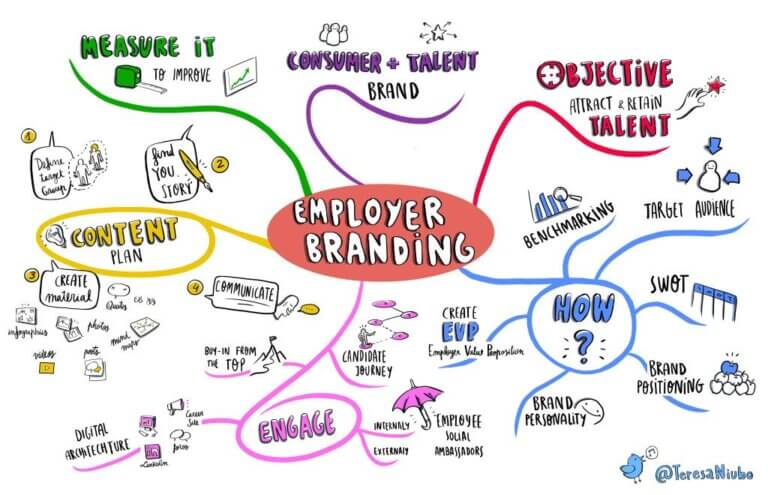When it comes to the job hunt, you’re going to put your best foot forward — and so are the companies looking to hire you. Sometimes, that can make it challenging for you to tell whether or not that company truly has a healthy work culture and if they’re the best fit for you.
After all, nearly 40% of employees want to quit their jobs because they feel like they don’t fit in or because the work environment is toxic. Looking for your perfect match? Here are ten tips for finding healthy work culture during your job hunt.
1. Figure out what your values are💖
You are the most important factor in determining the kind of workplace culture you want. While a toxic workplace is toxic for everyone, what makes the best, healthiest work culture for you is entirely up to you!
Figure out exactly what you value in your work life. Is it flexibility? A fun environment and team building? Space for meditation and religious practices? Open communication? Once you narrow down what you value most, you’ll be able to take a closer look at the job opportunities that come your way and whether or not they have an honest chance of working out.
2. Compare your values with company ones⚖️
Once you know your values, find out the values of each company you want to apply to. While they may not check every single one of your boxes, they should hit the major ones.
A lot of the information you’ll want to know about a company will shine through in its branding. If you’re unfamiliar with startups, we’ve got a guide to help you understand what to look for.
@pivotandedge 72% of people have started a new job just to hate it!😳Look for these culture red flags to avoid that new role regret🚩🚩 #interviewpreptok #workculturematters #jobseekerlife #workplacecheck @pivotandedge
3. Analyze the words used in job descriptions🧐
Pay special attention to how postings are written; as noted by Harvard Business Review, their “wording can reveal beliefs and priorities that aren’t overtly shared.” After all, language tells you a lot! If you can ‘read between the lines’ to pick up on red flags, you can begin to spot telltale signs of toxic workplaces.
From job postings to a company’s hiring page and website, they’re often telling you everything you need to know about their workplace culture – you just need to be able to see it. For instance, if they’re talking about a “fast-paced environment” requiring someone who “works well under pressure and meets deadlines”, you can probably assume that flexibility isn’t a high priority. Perks always sound pleasant, but the benefit of an office happy hour may not be worth the price for you.
4. Read employee reviews👀
In job-hunting, the internet is your friend. Take the time to read reviews about companies on websites like Glassdoor. Better yet, read the company’s response to the reviews.
Sometimes employees genuinely don’t work out, leading to a bad employer review. In that case, a response from the business is even more telling about the type of work culture you can expect. You also want to know how they accept criticism and feedback. Of course, it’s still easy for a business to put on a front. Luckily, we’ve laid out 4 of the biggest work culture red flags to keep an eye out for.
5. Leverage social media to see where they stand👨🏿💻
Social media has its perks. Find the channels your potential company uses and look at the type of content they post. Is it useful to clients? Is it positive? Their social media presence (or lack thereof) reflects the company’s brand and, therefore, values.
You can also scroll back a little deeper to a time of significant conflict or challenge in the world. How did the company respond (if at all)? How would you want a company you work with to respond?
6. Make sure culture isn’t simply surface level🏔
Picture this: You walk into an interview and see all the makings of a fun, hip startup environment. There are bean bag chairs, beers on tap, a ping pong table, and maybe even a dartboard. It all seems great, but pay closer attention to how the space feels.**
Are people chatting at the coffee machine, or are they passing by with hardly a word? Does upper management light up and greet their employees, or do they act like they have better places to be? The underlying energy of a workplace can help you figure out whether or not it’s a good match for how you want to experience your day to day. We spend about a quarter of the hours in a year at work, so that environment is important.
**If you’re in a remote setting, you can ask to meet with more members of the team for additional context. See more in Point 9!
7. Look at how the company communicates💬
There’s a convenient way to tell if a work environment is healthy or not, and it all comes back to language. How have they communicated with you throughout the application process? If something in the initial hiring process (when they should be putting their best foot forward) doesn’t sit right with you, it isn’t likely to improve after you’ve been hired.
P.S. When you go in for an interview, look around at any posters or other types of communication in the office for hints. Doing a video interview? They should still be able to convey their company culture, even in a virtual world.
8. Inquire about growth opportunities🌱
Regardless of what makes up a healthy work culture for you, one key component should apply to everyone: your employer should care about you and your future in the company.
One of the easiest ways for a business to show this is whether or not they are willing to invest in you as an employee via educational and growth opportunities. Do they have budgets for personal development? Do they offer additional training? If not, that’s not the best sign for your career trajectory.
@pivotandedge your interviewer should be able to share details on company DEI initiatives!!👏🏿👏🏾👏🏽👏👏🏻#interviewpreptok #truthsfromarecruiter #interviewskills #workculture @pivotandedge ♬ Pass The Dutchie – Musical Youth
9. Talk to other employees🗣
One resource you’ll have at your fingertips when touring an office or coming in for an interview is other employees. Whether you connect with them privately over LinkedIn or simply ask for your hiring manager to connect you, try to find the time to ask them some questions (out of earshot of management, of course).
Consider buying them a coffee to ask how they like working there, what they think of the company, the other employees, and their bosses. First-hand accounts are always handy to have!
10. Ask questions during your interview🙋🏼♀️
For our last tip — if you have questions about culture, just ask. As much as they’re interviewing you, you can take the time to interview them.
Ask what they value as a business, how they view their company culture, their efforts to foster diversity and inclusivity, and what kind of environment they seek to create. You can also ask more subtle questions, such as: “what’s your process for feedback on management and the company?” Or, “if someone makes a mistake, how do you approach it?”
Not every “healthy” culture may work for you, but a toxic culture is almost always a bad situation. Luckily, the statistics are on your side. According to TeamStage via research by Deloitte, 94% of entrepreneurs and 88% of job seekers think that a healthy work culture is crucial for success.
With that in mind, you can focus on finding the right company to fit your personal definition of a healthy workplace. Need some help? Reminder, the Pivot + Edge Talent Network is a great way to get access to free candidate resources and job seeker tips!







